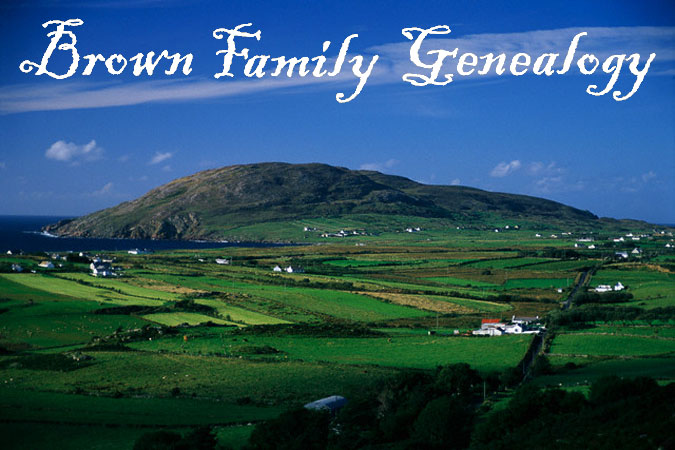 |
|
—Bio of Marjory Brown in the Marchant Family Bible. The surname Brown was first found in Cumberland, where the Brown family was seated from very early times, having been granted lands by Duke William of Normandy, their liege Lord, for their distinguished assistance at the Battle of Hastings in 1066 A.D. The Family Coat of Arms is a blue shield with a gold chevron between three gold fleur de lis. The Family Motto translates as "Let majesty flourish."
We are related to the Browns through the Marchant and Holland families. A story in the Marchant Family Bible, owned by Gloria Benson of Minnesota, intones: "Seven Brown sisters came from N. Ireland (County Caven)."
County Cavan (Contae An Cabhán in Irish, meaning "county of the hollow") is a sparsely populated area in north central Ireland, part of the province of Ulster. It was created by Elizabeth I of England. The county is bordered by County Monaghan, County Leitrim, County Longford, County Meath, County Westmeath in the Republic, and County Fermanagh in Northern Ireland. It's located immediately south of the border with Northern Ireland, about midway between the Atlantic Ocean and the Irish Sea.
The rural countryside of County Cavan is dotted with lakes and drumlins (small hillocks created by glaciers), and the longest river in Ireland, the 186 mile long River Shannon, originates in the rugged Cuilcagh Mountains in the west of the county Small-scale Dairy farming and hog raising are the principal economic activities of the county and oats, potatoes, and flax are the primary crops.
There are a few remaining cairn tombs and crannog islands dating from ancient times in Cavan and Magh Sleacht plain near Ballyconnell was an important Celtic pagan shrine. When Saint Patrick established Christianity in Armagh, he also set up a monastery in Kilnavert in Cavan.
The Brown family has a long history in Cavan. A 1630 Muster Roll for County Cavan (extracted from LDS #1279327, Item 6) shows Ralph and Edward Browne (no arms) under Sir Stephen Butler on page 6, and a John Browne (no arms) on page 19 under "Townsmen of Cavan." Irelands Valuation office conducted its first survey of property ownership in Ireland from 1848 to 1864, which became known as "Griffiths Valuation."¹ The survey was used to determine the amount of tax each person should pay towards the support of the poor within their poor law union. No less than 146 Brown and Browne households were listed.
|
|
||||||||||||||||||||||||||||||||||||||||||||||
During the 18th century, Ireland established a reputation as a producer of fine linen (made from flax). At various times the government introduced special incentives to encourage the production of linen, usually giving away spinning wheels and looms. In 1796, the Irish Linen Board published a list of nearly 60,000 individuals who had received awards for planting flax (it was also known as the Spinning Wheel list or the Flax Growers Bounty). Spinning wheels were awarded based on the number of acres planted. People who planted one acre were awarded 4 spinning wheels and those growing 5 acres were awarded a loom. There were 12 farmers named Brown in Cavan on that list:
IRISH FLAX GROWERS LIST, 1796 |
||||||||||||||||||||||||||||||||||||||||||||||||||||
|
Of the twelve flax growers in Cavan with the Brown surname, only one is listed in the parish where Eliza and her daughters were farming twenty-five years later: Arthur Brown from Annagheliff parish. But several Brown families were reported residing near them in Aghnaclogh, Annagelliff parish, in the 1821 Census, and could be relations. The Brown daughters were:
CHILDREN OF ? AND ELIZA BROWN |
|
|
|
|
|
|
|
|
|
|
|
|
|
|
|
|
|
Times were tough for farmers in Ireland during the 1800s. The Act of Union of 1803 incorporated Ireland into British polity, but it was useless in easing the difficult situation of the people, and the prejudice of the British Protestant Masters to the Catholic Irish resulted in political subordination and religious unrest. Then at the end of the Napoleonic wars in 1814, came an immediate economic depression: prices fell dramatically, major industries collapsed, investment and growth stagnated, and unemployment and destitution became widespread. Another cause for the depression was simply population growth. In 1800, the number of people in Ireland was between 4,500,000 and 5,000,000; by the 1821 census, it was recorded as 6,800,000, and overwhelmingly affected the poorest laboring classes. What caused such rapid growth was the flood of soldiers returning home from the Napoleonic Wars and the relatively low legal marrying age, which in turn led to very large families and the subdivision of holdings, which resulted in increasingly poorer standards of living.
Unfortunately for farmers like the Browns, bad weather between 1816 and 1818 destroyed Irish crops, and smallpox and typhus killed over 50,000 people. By 1821, people were reported starving to death in Cork and Clare.
With no father and (probably) no mother at home, the impoverished Brown sisters had little opportunity to advance in the country of their birth, so they had to look to new lands to start fresh, and they chose Canada.⁶ The British Passenger Acts made immigration from the British Isles to Canada much cheaper than to the U.S.—the fare to Canada was 15 shillings, compared to the 4 or 5 pound fare to New York. The eldest sister, Margaret, left first, established a life in Canada (a possible uncle, David Brown, already lived in the area), then came back for her younger sisters. But the voyage was extremely difficult, and the cramped, dank ships caused many to arrive in the New World diseased and starving, although many didn't make it. The Marchant Bible story follows those events: "The oldest came first and returned for the younger ones. They were three months at sea and the youngest, Lucy, died at sea." Lucy and Mary definitely came with the Langs and Websters in 1831. Lucy was still living in parish of Kilmore up to boarding the ship, maybe on same land in Pollobane townland (it was 2 miles from town of Cavan). The sisters had a good support system with a possible uncle, David Brown and aunt Elizabeth Brown Griffith. Mary Griffith's husband, Charles Lang, was a blacksmith and seemed to be the leader in that family. Lucy apparently survived the voyage but died soon after. Her death record reads, "Lucy Brown late of the parish of Kilmore, near to the Town of Cavan, died at Chambly on Monday the twenty-eight day of November on thousand eight hundred and thirty one and was buried at Chambly on Tuesday the day following." She was buried at St. Stephen Anglican Church, in Chambly, LaVallee-du-Richelieu, Québec, Canada.
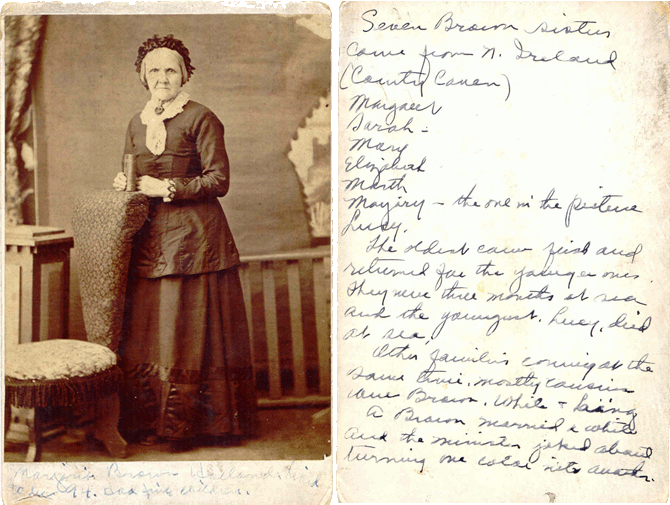
|
The sister in our line, MARJERY BROWN, avoided the Whites and the other cousins, and instead married another Irish transplant by the name of CHARLES HOLLAND.³ According to reconstructed 1852 census lists, the family settled in London, Ontario, at the confluence of the non-navigable Thames River, approximately halfway between Toronto, Ontario and Detroit, Michigan in the United States (according to a list by the Ontario Genealogical Society, London Branch, to replace the missing 1852 census for town of London). London was rebuilding, as a massive fire had destroyed most of the town's wooden buildings in 1845 (one of the first casualties was the town's only fire engine). The first railway was built there in 1853, then came the massive North Street (later Queens Avenue) Wesleyan Methodist Church, on the corner of North (now Queens Avenue) and Clarence streets, in 1854. Finally, on 1 Jan 1855, London was incorporated as a "city" (10,000 or more residents).
Marjery and Charles added five more residents to the city, and their names were...
CHILDREN OF CHARLES HOLLAND AND MARJERY BROWN |
|
|
|
|
|
|
|
|
|
|
|
|
|
|
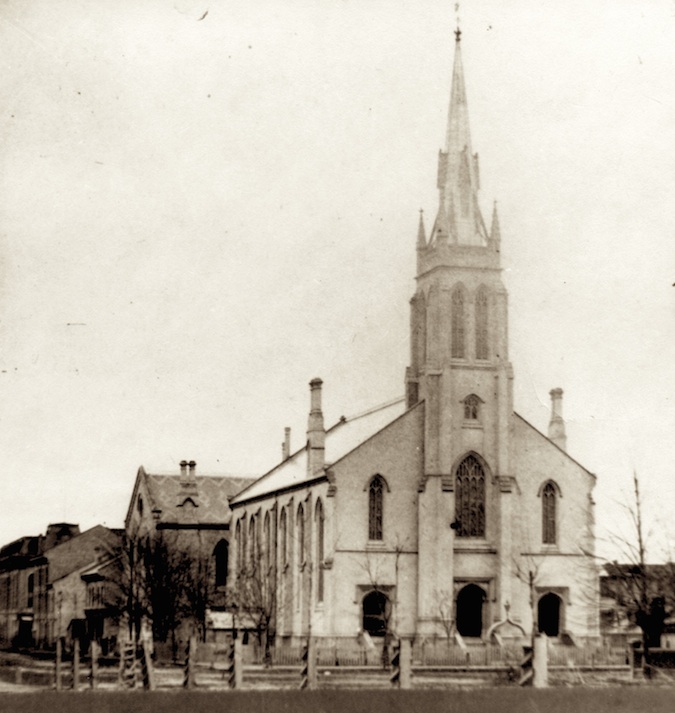 North Street Methodist Church,⁴ situated on the south-west corner of Clarence and North Streets in London, Ontario, was built in 1854. It was destroyed by fire in 1895. (SOURCE: Ivey Family London Room, London Public Library, London, Ontario, Canada) |
The 1871 Census shows Marjery in Bothwell, with her children (minus Jane, who would have been about 13). Martha, recently married to WILLIAM HENRY MARCHANT, is still living at home as well, listed as "MARTHA MERCHANT." Funnily enough, she's also listed as living 182 km away with her husband (and still spelled "Merchant") and his uncle Samuel Read's family in Niagara, Ontario. So either the census was taken on different days, or somebody was fibbing.
Then by the 1881 Ontario Census, Marjery was living on the south side of King St., 6 east of Thames St. in Bothwell, with:
|
|
|||||||||||||||||||||||||||||||
Not counting Lucy, who died at sea, the surviving Brown sisters seem to have lived very long lives, especially for 19th-Century Canada. Sarah lived to age 91, through two marriages and passed on 10 Apr 1897 in East Nissouri⁵; Mary lived to 92 and died on 25 Mar 1901 in Middlesex; But the longest-lived was Marjery, who died from bronchitis on 10 Apr 1909 at 523 Bathurst Street, London, Middlesex, Ontario, Canada. She was 94 years old, and every year was lived with strong convictions and even stronger love for her family. She had outlived her sisters, her husband and two of her children—and even some grandchildren (although her namesake, Marjorie Marchant, would raise a family that would be this writer's line). Some of her children, Martha and William, had moved to the United States (Martha to Michigan and William, briefly, to New York as a proofreader and publisher), and she watched their dreams and ambitions unfold with a new century, in a world that she couldn't have possibly imagined from an Irish farmhouse 90 years before. For Marjory and the brave Brown sisters, it was a long, amazing, occasionally sad, but worthwhile journey.
GENEALOGY ELIZA BROWN begat... MARJERY BROWN, who married CHARLES HOLLAND and begat... MARTHA HOLLAND (1852 - 1911) who married WILLIAM MARCHANT (1850 - 1896) and begat... MARJORIE MARCHANT (1892 - 1939) who married CARLISLE HAUSE (1891 - 1972) and begat... CARLETON MARCHANT HAUSE, SR. (1917 - 1983) who married JEANNE BRUNNER (1918 - 2000) and begat... CARLETON MARCHANT HAUSE, JR. (1939 - 2014) who married MARTHA WENK (b. 1940) and begat... JEFF (who married LORI ANN DOTSON), KATHY (who married HAL LARSEN), ERIC (who married MARY MOONSAMMY), and MICHELE HAUSE (who married JOHN SCOTT HOUSTON). |
NOTES FOR THIS PAGE:
¹—Griffith's Valuation, or Primary Valuation of Ireland, was executed under the direction of Sir Richard Griffith to provide a basis for determining taxes. This involved establishing the value of all privately held lands and buildings in both rural and urban areas in order to figure a rental rate for each unit of property. The resulting survey was arranged by barony and civil parish, with an index to townlands appearing in each volume. The original volumes of the survey are held in the National Archives, Dublin, and Public Record Office, Belfast. The Griffiths Survey map shows the exact location of house 18 in Pollabane townland. (In Griffith's Valuation of Pollabane, Kilmore, Cavan, the occupier of house 18 was Owen Fay and the immediate lessor was Samuel Moore.
²—Irish Cenus ages, particularly for adults, are famously inaccurate, so Eliza may be considerably older than the age that is given, which is 30.
³—The narrative on the back of Marjery's photo says that seven Brown sisters embarked on the Atlantic crossing, but it did not say they were all single at the time. Genealogist Mark Folkestad discovered a rare passenger manifest from the period that is tantalizing: The Anna, a ship of the J. & J. Cooke Line, in an 1851 voyage from Ireland to Quebec, had a Charles Holland, no age given, from Omagh (County Tyrone, Northern Ireland) and a Margaret Brown, no age given, from Douglas Bridge (also in County Tyrone, Northern Ireland, about a hundred miles from County Cavan). When Margaret returned to Ireland to gather the rest of her family, Charles might have taken a job in Quebec to earn money while he waited for the arrival of his wife and her family. In support of this theory, the birth country of Marjery's daughter Rebecca is Ireland, according to her death certificate as well as the 1861, 1871, 1881, and 1891 census records, while her siblings all list their birthplace as Ontario. This lends support to Genealogist Mark Folkestad's theory that Charles and Marjery were married in Ireland, and Rebecca came to Canada with her mother as an infant.
⁴—The Wesleyan Methodist Church was the name used by the major Methodist movement in Great Britain following its split from the Church of England after the death of John Wesley and the appearance of parallel Methodist movements. At its heart, the theology of John Wesley stressed the life of Christian holiness: to love God with all one's heart, mind, soul and strength and to love one's neighbour as oneself. See also Ministry of Jesus. Wesley's teaching also stressed experiential religion and moral responsibility. "Wesleyan" was added to the title to differentiate it from the Welsh Calvinistic Methodists, founded by George Whitefield who like Wesley and his brother Charles had been a member of the Holy Club in Oxford to which the (originally derogatory) epithet "Methodist" was first applied, and from the Primitive Methodist movement which separated from the Wesleyans in 1807.
⁵—"My great²grandmother was Sarah Brown married first to a Hughes and then James Orme. My mother told me she was one of seven or eight sisters and there were colours in her family names. One of Mom's cousins sent me a letter in 1981 giving me names for a few of Sarah's sisters as Mary (married a Ferguson), Marjory (married a Young) and (_____married a Holland). Obviously she made a mistake about who Marjory married but I think she might have been right about the sister, Mary Brown. Her husband may have been Thomas Ferguson, a farmer in London Township. I need to spend some more time on that couple but I think the naming pattern of their daughters fits and one of them may have married a Young. I found Sarah Brown's marriage at Christ Church Cathedral in Montreal to Thomas Hughes. Their eldest son was born there, too. According to one Hughes descendant Sarah, Thomas and baby came up to London Township by horse and sleigh, crossing one large body of water on bubble ice with it cracking as they went over it. Not sure who else, if anyone, was with them. They were exactly the right sort of people for Colonel Talbot. He encouraged the Irish protestants to settle on his land. Thomas Hughes was killed by a falling tree in 1827. I believe their second son was born after his father's death. Then Sarah married a man named Orme. Land records show a William Orme but Sarah's grave stone shows her as widow of James Orme. They had a son William (1832) and daughter, Elizabeth (1835). I have wondered whether Elizabeth made a mistake about her father's given name when she had the stone carved. In any event, Orme was deceased by 1842 when the census shows Sarah Oram head of household, having been in the township for 16 years. She was on concession 11, lot 17 south half. A photo of Sarah Brown Hughes Orme is attached. She had red hair and smoked a little white clay pipe and was a staunch Methodist. When her daughter Elizabeth Orme married 1855 Charles Smith (my great-grandparents) Sarah moved into their house where she lived for the rest of her long life, She died 1897 age 91 yrs."—Bonnie Ostler (bjrgen@gmail.com)
⁶—"Hi Jeff; After finding the baptism of David Brown Oram son of Sarah Brown and James Orme, I re-read the back of Marjory Brown Holland's photo and decided to search for "cousins" 'Brown' 'White' and 'Laing/Lang.' I have been working on Charles Lang, for a while. (Connection not quite proven but I am hopeful.) David is definitely not a family name among Ormes or our Brown sisters. Two David Browns are buried in Birr Methodist Cemetery. The younger David Brown (b. 1807 New York State d. 1877 London twp) is on several Ancestry trees. The 1871 shows he is of 'Irish origin'. None of the trees included David Brown Sen'r (1780-1956). I contacted a couple of them. They had no way of proving the relationship. Land records have worked for me before. Look at my 'Ann Whetstone family' tree for the two David Browns. In Senior's Gallery you will find land petition documents. He was in the province of Ontario 1819. Received title to north half of lot 6, concession 10 (the north half fronts on concession 11). Then go to Junior's wife, Mary Powell. In her Gallery you will see "Mrs. David Brown (Mary Powell) 1878 Atlas". Junior died the previous year. She is on lot 6 concession 11. That proves the two Davids were father and son but does not prove their relationship to our Brown sisters. Even without proof, we can add the Davids to our trees. David Jr.'s daughter Rebecca Brown (1847-1877) married James Stewart Ferguson (1845-1902), son of Robert Ferguson (1813-1875). Robert's brother Thomas Ferguson (1806-1878) married Mary Brown (1809-1901) a sister of Sarah and Marjory. It seems a gutsy move for the Brown sisters to pick up and come to Canada on their own...even if their parents were both deceased. Eliza seems to me to have been their step-mother...too young as mother. With "cousin" David Brown in London Twp for half a dozen years, they would have had a safe destination. There may be more proof to be found." Bonnie. (bjrgen@gmail.com) NOTE: David Brown Sr, David Brown Jr., Charles and Mary Lang, John Griffith, as well as Richard and Margaret Stephens are all buried in Birr Methodist Cemetery, Hwy 4 (Richmond St), Community of Birr, London Township (Concession 12, Lot 17); London Township, Middlesex County, ON. GPS: 43.120905,-81.332313; Registered to Birr United Church Cemetery Board.
SOURCES FOR THIS PAGE:
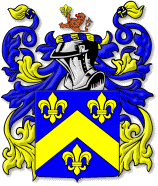
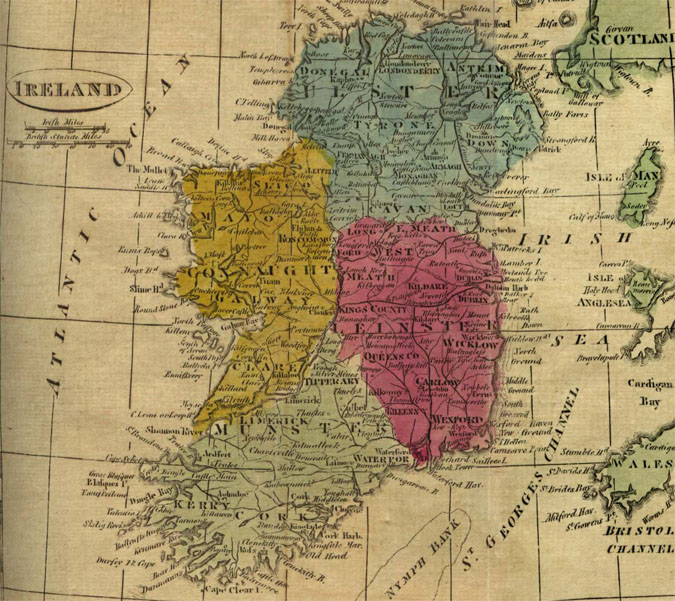
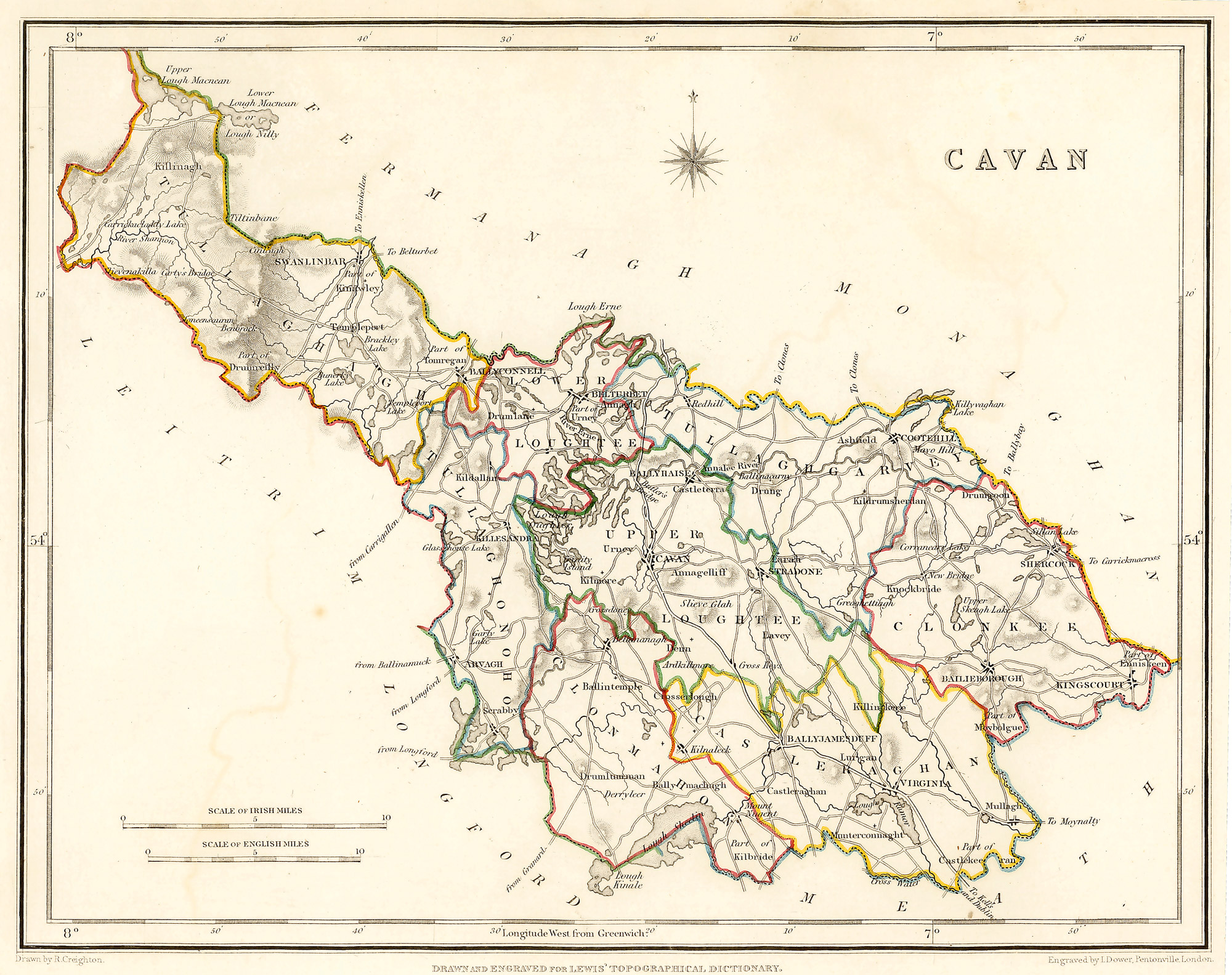
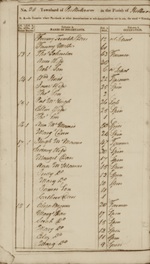




.gif)


